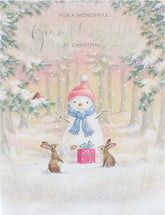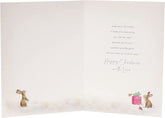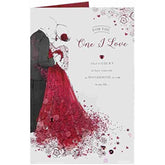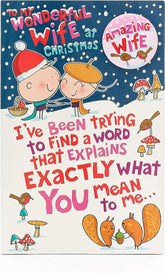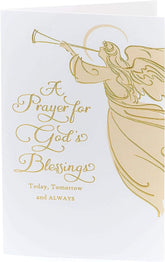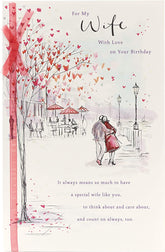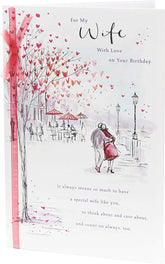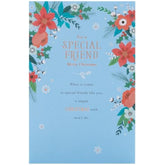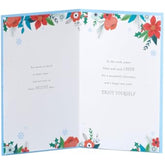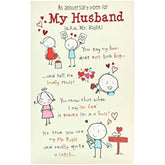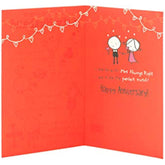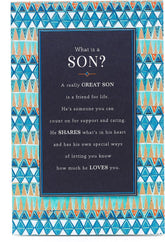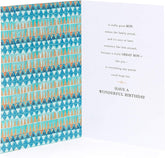In a world dominated by quick texts and social media posts, the timeless tradition of sending a greeting card still holds a special place in people’s hearts. Whether it’s for a birthday, a wedding, or simply a heartfelt thank-you, a thoughtfully chosen card can leave a lasting impact on the recipient. But with so many options available, how do you choose the perfect greeting card for each occasion?
This article will guide you through the art of selecting the right card to match the sentiment and occasion. From choosing the ideal design to crafting the perfect message, we’ll explore how to make your card stand out and resonate with your recipient.
1. Consider the Occasion
The first step in choosing the perfect greeting card is understanding the occasion. Greeting cards can be tailored for a wide range of events, each requiring its unique tone and style. Here are some popular occasions and tips for selecting the right card:
-
Birthdays: For birthdays, choose a card that reflects the recipient’s personality. Bright, cheerful designs work well for children or those who enjoy fun, light-hearted celebrations. For someone older or with more refined tastes, opt for a classy, elegant card with a thoughtful message. Now a days people also gift bedside lamp to children which is cute and beautiful.
-
Weddings: Wedding cards are usually formal and elegant. Look for designs featuring soft colors, floral motifs, or romantic themes. A wedding card should convey joy and best wishes for the couple’s future. You may also consider personalized wedding cards that feature the couple’s names or a customized message.
-
Anniversaries: Anniversary cards should celebrate the enduring love and commitment between the couple. Whether it’s your own partner or friends celebrating a milestone, choose cards with romantic imagery, such as hearts, rings, or intertwined symbols. For milestone anniversaries, consider cards that mark the specific number of years, like a “Silver” (25th) or “Golden” (50th) anniversary.
-
Thank You: Thank-you cards are perfect for expressing appreciation. Simple, clean designs with a short message of gratitude are often the best choice. Depending on the formality of the relationship, you can choose either a playful or more serious tone.
-
Sympathy: Sympathy cards are meant to offer comfort during difficult times. When choosing a sympathy card, opt for designs with muted colors and sensitive wording. Gentle floral or nature-themed imagery is often appropriate, and the message should convey support, empathy, and condolences.
2. Know Your Audience
Understanding who the card is for is just as important as knowing the occasion. A card that might appeal to a close friend may not be suitable for a co-worker or distant relative. Consider the recipient’s personality, relationship to you, and sense of humor when selecting a card.
-
For Close Friends and Family: You can be more personal and even humorous when choosing a card for a loved one. Cards that feature inside jokes, funny illustrations, or light-hearted messages are perfect for those with whom you share a close bond.
-
For Professional Relationships: If you’re sending a card to a co-worker, boss, or business associate, it’s best to keep the tone polite and professional. Avoid overly casual language or humor. Opt for simple, straightforward designs and messages that maintain a respectful tone.
-
For Older Recipients: Older generations may appreciate more traditional cards with formal language and classic designs. Consider choosing cards with elegant calligraphy, classic artwork, or nostalgic themes that reflect their tastes.
3. Pay Attention to Design
The design of a greeting card plays a crucial role in its overall impact. A well-designed card can make a powerful visual statement, even before the recipient reads the message. Here are some elements to consider:
-
Colors: The color palette of a card can evoke different emotions. Bright, vibrant colors like yellow, orange, and red are often associated with happiness and celebration, making them ideal for birthdays and festive occasions. Softer shades, like pastels or earth tones, are more appropriate for sympathy or romantic cards.
-
Imagery: The images on a card should align with the occasion and the recipient’s personality. For instance, flowers, hearts, and delicate patterns are suitable for weddings and anniversaries, while cartoons, animals, or humorous illustrations work well for children’s cards or light-hearted occasions.
-
Font: The font style can also influence the tone of the card. Formal, scripted fonts convey elegance and seriousness, making them appropriate for formal events like weddings and graduations. Casual, playful fonts are better suited for informal occasions like birthdays or baby showers.
4. Craft the Perfect Message
While the design and occasion are crucial, the message inside the card is what truly counts. Writing a thoughtful, personalized message can make your card stand out and show that you’ve put effort into choosing and sending it. Here are some tips for crafting the perfect message:
-
Keep It Personal: Whenever possible, personalize the message. Mention specific details about the recipient or the occasion. For example, instead of a generic “Happy Birthday,” you might write, “Happy 30th Birthday! I hope this year brings you as much joy as you’ve brought to all of us.”
-
Express Genuine Sentiment: Avoid clichés and overly generic phrases. Instead, speak from the heart. Whether it’s a message of congratulations, sympathy, or gratitude, expressing genuine feelings will make your card more meaningful.
-
Be Mindful of the Tone: The tone of your message should match the occasion. For a humorous birthday card, feel free to be light-hearted and fun. However, for more serious occasions like sympathy or condolences, stick to a respectful and compassionate tone.
-
Handwrite Your Message: Even if the card comes with a pre-printed message, adding a handwritten note can elevate it. Handwriting your message adds a personal touch and shows that you’ve taken the time to make the card special.
5. Consider Customisation
In today’s world, customised greeting cards are becoming increasingly popular. Custom cards allow you to add personal photos, names, or messages, making the card truly unique. Whether it’s for a wedding, birthday, or holiday, a customised card can show the recipient that you’ve gone the extra mile to create something special just for them.
Conclusion
Choosing the perfect greeting card is an art that involves thoughtfulness, creativity, and a deep understanding of the occasion and the recipient. By considering the event, the audience, the design, and the message, you can ensure that your greeting card stands out and leaves a lasting impression. The next time you’re selecting a card, remember that it’s not just about the paper and ink - it’s about conveying your feelings in a way that resonates with the person receiving it. After all, in a fast-paced digital world, a well-chosen card can offer a moment of connection that no text or email can replace.
